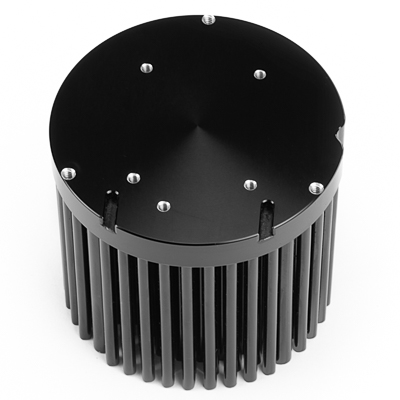Electronics Cooling

The basic design of a heatsink involves a base which is most often attached directly to the heat source. Made from materials with good conductivity such as copper or an aluminum alloy, the base is then usually connected to thinly shaped cooling fins that carry the thermal energy out into the surrounding air. Important considerations for constructing the best electronics cooling device include striking a functional balance between high surface area and good internal conductivity. The first goal is based on the fact that heat dissipation is facilitated by the presence of the largest amount of surface area for the heat to leave by. High surface area is attained through the grouping together of a large amount of thin fins. Unfortunately, overdoing the surface area can actually get in the way of airflow, a crucial part of the convection process that is necessary to complete the transfer of thermal energy out of the electronic component.
Along with heatsinks, the process of electronics cooling is often quite dependent upon the presence of fans to complete the forced convection that is necessary for the dissipation of heat. At this point, however, the designer must make sure that the fan noise level is kept down to make the component consumer friendly. Generally, a larger fan provides the best proportion between electronic cooling efficiency and noise reduction requirements.
For Your Next Project, Contact CoolianceToday!
High reliability thermal solutions & precision metal products.
